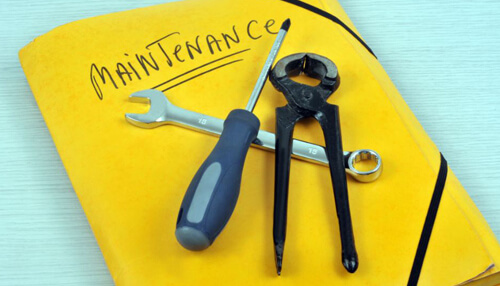Large companies and corporations need more than outstanding products, services and dedicated employees to be profitable. If these businesses rely on company cars in any capacity, these vehicles are also part of the “successful company” equation. In many ways, fleet vehicles are like employees — if they “call in sick” due to equipment failure or are otherwise unreliable, it can have a negative impact on the entire company. Fortunately, by adopting a fleet maintenance and repair schedule, business owners can help prevent issues from occurring and ensure the company cars stay on the road. Here’s how to do this as effectively as possible.
Keep Basic Parts and Supplies on Hand
Consider sending fleet vehicles to a mechanic for major work but handle basic tasks onsite to save time and money. For instance, stocking up on motor oil for the cars is a good idea; Even without a full oil change, employees can top up with a quart if the oil level is low.
Other parts to keep on hand include air filters, spare tires and a large supply of o-rings. Consider ordering automotive basics in bulk due to supply chain issues causing difficulty in obtaining various parts and supplies.
Developing a Strict and Well-Communicated Fleet Maintenance Policy
Another way to make sure your fleet vehicles stay road worthy — and that your employees who drive these cars don’t end up stranded at the side of the road — is to develop well-organized and strictly maintained policies and procedures for each car. As Wilmar Inc. notes, it is also important to keep your fleet drivers in the loop about these policies so they are not only aware of them, but can also help keep an eye on things like mileage, oil, gas mileage and tire pressure. Schedules for preventive maintenance and tune-ups should be readily available for all to see; this way, everyone will know when a vehicle needs repairs.
Encourage Input from Drivers
According to Work Truck Online, your drivers are ultimately going to be the best source of information about each car and how it is performing. Inform drivers that their experience in the car is a priority, despite having a maintenance schedule. Encourage drivers to report any vehicle issues promptly and allow off-schedule service for problems like shimmy, shake, or oil leaks.
Make sure every fleet vehicle carries basic safety gear like jumper cables, first aid kit, flares, reflectors, flashlight, and toolkit.
When It Comes to Fleet Maintenance, Being Proactive Is Key
Keeping your drivers safe while they are at work is crucial to your corporation’s success. By being proactive about fleet maintenance and repair, you will go a long way in achieving this goal. From keeping parts of supplies on hand at your business and in each vehicle, creating a repair schedule and encouraging your fleet drivers to be an active part of the repair and maintenance process, your company cars should remain safe and reliable for years to come.



